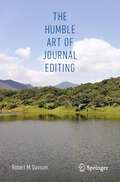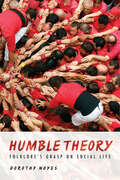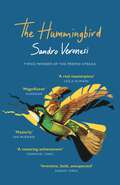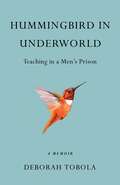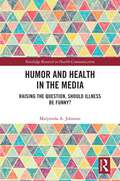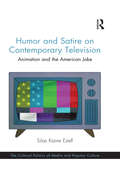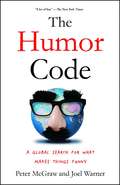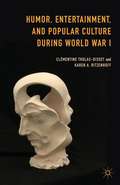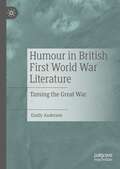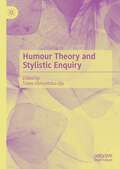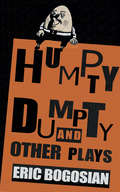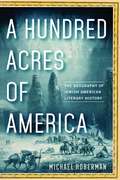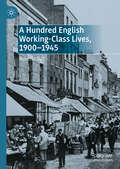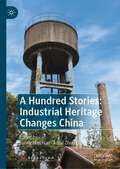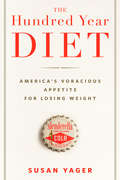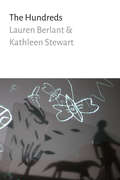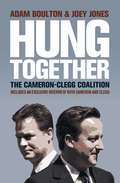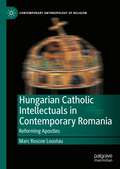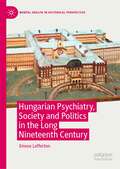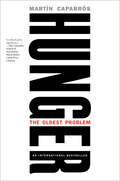- Table View
- List View
The Humble Art of Journal Editing
by Robert M. DavisonThe publication of scholarly research is both a major driver of social progress and a significant industry in its own right. Scholarly research is the focus of attention for countless numbers of scholars globally and a key measure of scholarly excellence. Much has been written about the conduct of research that is designed to help scholars attain appropriate standards of rigor and relevance, and indeed craft their research outputs in ways appropriate for different venues, notably as journal articles, conference papers, book chapters, and books. However, although scholarly researchers fulfill roles other than as authors, for instance as journal reviewers and editors, there is a dearth of consolidated information about the nature of editorial work. Drawing on over two decades of experience in editing scholarly journals, the author offers a more systematic guide to scholarly journal editing.The book begins with an introduction to the art of scholarly journal editing,the nature of that art (Chapter 1), and an examination of editorial promulgation of cultural values of scholarly journals with an emphasis on responsible research (Chapter 2). Chapter 3 examines the many issues associated with sourcing content, and opines on the novelty, breadth, and depth of research, including discussions of indigenous theorization, serendipity, iconoclastic research, and the value of special issues. Chapter 4 deals with the review process and offers advice for formulating effective reviewer guidelines that lead to constructive and developmental advice for authors. The next two chapters discuss the audience of the journal as well as publisher relations. Finally, the book is concluded with thoughts and recommendations about emerging challenges, such as the ethics of AI tools (like ChatGPT), predatory journals, and the open-access movement.Offering a practical guide to editing scholarly journals, this book will be a key resource for scholars making the leap from researcher to editor, regardless of discipline.
Humble Theory: Folklore's Grasp on Social Life
by Dorothy NoyesCelebrated folklorist, Dorothy Noyes, offers an unforgettable glimpse of her craft and the many ways it matters. Folklore is the dirty linen of modernity, carrying the traces of working bodies and the worlds they live in. It is necessary but embarrassing, not easily blanched and made respectable for public view, although sometimes this display is deemed useful. The place of folklore studies among modern academic disciplines has accordingly been marginal and precarious, yet folklore studies are foundational and persistent. Long engaged with all that escapes the gaze of grand theory and grand narratives, folklorists have followed the lead of the people whose practices they study. They attend to local economies of meaning; they examine the challenge of making room for maneuver within circumstances one does not control. Incisive and wide ranging, the fifteen essays in this book chronicle the "humble theory" of both folk and folklorist as interacting perspectives on social life in the modern Western world.
The Hummingbird: ‘Magnificent’ (Guardian)
by Sandro VeronesiA BOOK OF THE YEAR FOR THE GUARDIAN: 'DEEPLY PLEASURABLE'A BOOK OF THE YEAR FOR THE SPECTATOR: 'WHAT A JOY''Magnificent' Guardian'A towering achivement' Financial Times'Inventive, bold, unexpected' Sunday Times'Everything that makes the novel worthwhile and engaging is here: warmth, wit, intelligence, love, death, high seriousness, low comedy, philosophy, subtle personal relationships and the complex interior life of human beings'Guardian'Not since William Boyd's Any Human Heart has a novel captured the feast and famine nature of a single life with such invention and tenderness'Financial Times'There is a pleasing sense of having grappled with the real stuff of life: loss, grief, love, desire, pain, uncertainty, confusion, joy, despair - all while having fun'The Sunday Times'Instantly immersive, playfully inventive, effortlessly wise'Observer'Masterly: a cabinet of curiosities and delights, packed with small wonders'Ian McEwan'A real masterpiece. A funny, touching, profound book that made me cry like a little girl on the last page'Leïla Slimani'A remarkable accomplishment, a true gift to the world'Michael Cunningham'Ardent, gripping, and inventive to the core'Jhumpa LahiriMarco Carrera is 'the hummingbird,' a man with the almost supernatural ability to stay still as the world around him continues to change.As he navigates the challenges of life - confronting the death of his sister and the absence of his brother; taking care of his parents as they approach the end of their lives; raising his granddaughter when her mother, Marco's own child, can no longer be there for her; coming to terms with his love for the enigmatic Luisa - Marco Carrera comes to represent the quiet heroism that pervades so much of our everyday existence.A thrilling novel about the need to look to the future with hope and live with intensity to the very end.THE NO. 1 INTERNATIONAL BESTSELLEROver 300,000 copies soldSoon to be a major motion pictureWinner of the Premio StregaWinner of the Prix du Livre EtrangerBook of the Year for the Corriere della Sera
Hummingbird in Underworld: Teaching in a Men's Prison, A Memoir
by Deborah TobolaAt the age of forty-five, Deborah Tobola returns to her birthplace, San Luis Obispo, to work in the very prison her father worked in when he was a student at Cal Poly. But she&’s not wearing a uniform as he did; she&’s there to teach creative writing and manage the prison&’s arts program—a dream job. As she creates a theatre program for prisoners, Tobola finds plenty of drama off the stage as well. Inside the razor wire she finds a world frozen in the &’50s, with no contact with the outside except by telephone; officers who think prisoners don&’t deserve programs; bureaucrats who want to cut arts funding; and inmates who steal, or worse. But she loves engaging prisoners in the arts and helping them discover their voices: men like Opie, the gentleman robber; Razor, the roughneck who subscribes to The New Yorker; charismatic Green Eyes, who really has blue eyes; Doo Wop, a singer known for the desserts he creates from prison fare. Alternating between tales of creating drama in prison and Tobola&’s own story, Hummingbird in Underworld takes readers on an unforgettable literary journey—one that is frank, funny, and fascinating.
Humor and Health in the Media: Raising the Question, Should Illness be Funny? (Routledge Research in Health Communication)
by Malynnda A. JohnsonExamining popular media portrayals of various health topics, this book offers a critical analysis of how those mediated messages can impact, for good or ill, people’s physical and mental health.Looking specifically at how various depictions of health topics have both aided in the normalization of health topics such as neurodiversity and HIV while also critiquing the dissemination of misinformation on these same topics, this book offers insight into the ways in which humorous content can both help and hurt. The author draws on a critical analysis of popular media including shows, social media, and stand-up specials, as well as interviews with those who use humor within health settings, such as Red Nose Docs, comedians who focus on their own health issues.This insightful study will interest scholars and students of health in popular culture as well as health communication, media studies, public health administration, and health policy.
Humor and Masculinity in U.S. Fiction: Intersections, Performances, and Functions (Routledge Research in American Literature and Culture)
by Joseph L. CoulombeHumor and Masculinity in U.S. Fiction offers a pragmatic and theoretically informed model for analyzing how humor and gender intersect in key U.S. texts, bringing much-needed attention to the complex ways that humor can support and/or subvert reductive masculine codes and behaviors. Its argument builds upon three major humor theories – the incongruity theory, superiority theory, and relief theory – to analyze how humor is used to negotiate the shifting constructions of masculinity and manhood in American culture and literature. Focusing on explicit textual references to joking, pranks, and laughter, Humor and Masculinity in U.S. Fiction offers well-supported, original interpretations of works by Mark Twain, Owen Wister, Dorothy Parker, Zora Neale Hurston, Joseph Heller, Philip Roth, and Sherman Alexie. The primary goal of Humor and Masculinity in U.S. Fiction is to understand the multiple ways that humor performs and interrogates masculinity in seminal U.S. texts.
Humor and Power in Algeria, 1920 to 2021 (Public Cultures of the Middle East and North Africa)
by Elizabeth M. PeregoIn times of peace as well as conflict, humor has served Algerians as a tool of both unification and division. Humor has also assisted Algerians of various backgrounds and ideological leanings with engaging critically in power struggles throughout the country's contemporary history. By analyzing comedic discourse in various forms (including plays, jokes, and cartoons), Humor and Power in Algeria, 1920 to 2021 demonstrates the globally informed and creative ways that civilians have made sense of moments of victory and loss through humor. Using oral interviews and media archives in Arabic, French, and Tamazight, Elizabeth M. Perego expands on theoretical debates about humor as a tool of resistance and explores the importance of humor as an instrument of war, peace, and social memory, as well as a source for retracing volatile, contested pasts. Humor and Power in Algeria, 1920 to 2021 reveals how Algerians have harnessed humor to express competing visions for unity in a divided colonial society, to channel and process emotions surrounding a brutal war of decolonization and the forging of a new nation, and to demonstrate resilience in the face of a terrifying civil conflict.
Humor and Satire on Contemporary Television: Animation and the American Joke (The Cultural Politics of Media and Popular Culture)
by Silas Kaine EzellThis book examines contemporary American animated humor, focusing on popular animated television shows in order to explore the ways in which they engage with American culture and history, employing a peculiarly American way of using humor to discuss important cultural issues. With attention to the work of American humorists, such as the Southwest humorists, Mark Twain, Dorothy Parker, and Kurt Vonnegut, and the question of the extent to which modern animated satire shares the qualities of earlier humor, particularly the use of setting, the carnivalesque, collective memory, racial humor, and irony, Humor and Satire on Contemporary Television concentrates on a particular strand of American humor: the use of satire to expose the gap between the American ideal and the American experience. Taking up the notion of ’The Great American Joke’, the author examines the discursive humor of programmes such as The Simpsons, South Park , Family Guy , King of the Hill, Daria, American Dad!, The Boondocks, The PJs and Futurama . A study of how animated television programmes offer a new discourse on a very traditional strain of American humor, this book will appeal to scholars and students of popular culture, television and media studies, American literature and visual studies, and contemporary humor and satire.
The Humor Code: A Global Search for What Makes Things Funny
by Peter McGraw Joel WarnerPart road-trip comedy and part social science experiment, a scientist and a journalist “shed fascinating light on what makes us laugh and why” (New York Post).Two guys. Nineteen experiments. Five continents. 91,000 miles. The Humor Code follows the madcap adventures and oddball experiments of Professor Peter McGraw and writer Joel Warner as they discover the secret behind what makes things funny. In their search, they interview countless comics, from Doug Stanhope to Louis CK and travel across the globe from Norway to New York, from Palestine to the Amazon. It’s an epic quest, both brainy and harebrained, that culminates at the world’s largest comedy festival where the pair put their hard-earned knowledge to the test. For the first time, they have established a comprehensive theory that answers the question “what makes things funny?” Based on original research from the Humor Research Lab (HuRL) at the University of Colorado, Boulder, and the pair’s experiences across the globe, The Humor Code explains the secret behind winning the New Yorker cartoon caption contest, why some dead baby jokes are funnier than others, and whether laughter really is the best medicine. Hilarious, surprising, and sometimes even touching, The Humor Code “lays out a convincing theory about how humor works, and why it’s an essential survival mechanism” (Mother Jones).
Humor, Entertainment, and Popular Culture during World War I
by Clémentine Tholas-Disset Karen A. RitzenhoffHumor and entertainment were vital to the war effort during World War I. While entertainment provided relief to soldiers in the trenches, it also built up support for the war effort on the home front. This book looks at transnational war culture by examining seemingly light-hearted discourses on the Great War.
Humour and the Performance of Power in South Asia: Anxiety, Laughter and Politics in Unstable Times
by Sasanka Perera Dev Nath PathakThis book critically examines the role and politics of humour and the performance of power in South Asia. What does humour do and how does it manifest when lived political circumstances experience ruptures or instability? Can humour that emerges in such circumstances be viewed as a specific narrative on the nature of democracy in the region? Drawing upon essays from India, Sri Lanka and Bangladesh, this volume discusses many crucial historical and contemporary themes, including dance-drama performances in northern India; caste and stand-up comedy in India; cartoon narratives of citizens’ anxieties; civic participation through social media memes in Sri Lanka; media, politics and humorous public in Bangladesh; the politics of performance in India; and the influence of humour and satire as political commentaries. The volume explores the impact of humour in South Asian folklore, ritual performances, media and journalism, and online technologies. This topical and interdisciplinary book will be essential for scholars and researchers of cultural studies, political science, sociology and social anthropology, media and communication studies, theatre and performance studies, and South Asian studies.
Humour, Comedy and Laughter: Obscenities, Paradoxes, Insights and the Renewal of Life (Social Identities #8)
by Lidia Dina SciamaAnthropological writings on humor are not very numerous or extensive, but they do contain a great deal of insight into the diverse mental and social processes that underlie joking and laughter. On the basis of a wide range of ethnographic and textual materials, the chapters examine the cognitive, social, and moral aspects of humor and its potential to bring about a sense of amity and mutual understanding, even among different and possibly hostile people. Unfortunately, though, cartoons, jokes, and parodies can cause irremediable distress and offence. Nevertheless, contributors' cross-cultural evidence confirms that the positive aspects of humor far outweigh the danger of deepening divisions and fueling hostilities
Humour in British First World War Literature: Taming the Great War
by Emily AndersonThis book explores how humorous depictions of the Great War helped to familiarise, domesticate and tame the conflict. In contrast to the well-known First World War literature that focuses on extraordinary emotional disruption and the extremes of war, this study shows other writers used humour to create a gentle, mild amusement, drawing on familiar, popular genres and forms used before 1914. Emily Anderson argues that this humorous literature helped to transform the war into quotidian experience. Based on little-known primary material uncovered through detailed archival research, the book focuses on works that, while written by celebrated authors, tend not to be placed in the canon of Great War literature. Each chapter examines key examples of literary texts, ranging from short stories and poetry, to theatre and periodicals. In doing so, the book investigates the complex political and social significance of this tame style of humour.
Humour Theory and Stylistic Enquiry
by Taiwo Oloruntoba-OjuThis edited book brings together scholarly chapters on linguistic aspects of humour in literary and non-literary domains and contexts in different parts of the world. Previous scholarly engagements and theoretical postulations on humour and the comic provide veritable resources for reexamining the relationship between linguistic elements and comic sensations on the one hand, and the validity of interpretive humour stylistics on the other hand. Renowned Stylistics scholars, such as Michael Toolan, who writes the volume’s foreword against the backdrop of nearly four decades of scholarly engagement with stylistics, and Katie Wales, who in this volume engages with Charles Dickens, one of the most eminent satirists in English literature, as well as many other European and African authors who have worked ceaselessly in the area of humour and language, weigh in on the topic of language and humour in this volume. Together, they provide a variety of interesting perspectives on the topic, deploying different textual sources from different media and from different regions of the world. Part of the book’s offering includes integrative stylistic approaches to humour in African, European and American written texts, examinations of social media and political humour in Nigeria, Cameroon and Zimbabwe, pragmatics and humorous stance-taking, incongruity as comedy in works of fiction, and a unified levels of linguistic analysis approach to the investigation of humour. This book will be of interest to academics and students of Linguistics, Stylistics, Communications and Media Studies, and Humour Studies. Taiwo Oloruntoba-Oju is a Professor in the Department of English at the University of Ilorin in Nigeria
Humpty Dumpty and Other Plays
by Eric BogosianEric Bogosian is one of our most singular and exhilarating commentators on American life. His award-winning solo performance works have been performed with acclaim all over the world. As the New York Times has pointed out, "Bogosian is a born storyteller with perfect pitch." That is never more evident than in his newest book, which collects his three most recent plays. In Humpty Dumpty, five friends gather for a holiday at a mountain getaway where unforeseen events bring them to the brink of the end of the world; Griller, set in a New Jersey backyard, where a barbecue gathering turns sinister and deadly; and Red Angel, Bogosian's riff on Von Sternberg's The Blue Angel, reset on a college campus in 1990s New England."I want theater to wake me up, not lull me to sleep. My theater is not about fantasy, it's not about seduction. My theater is not an outline for a film. It is not a TV sitcom onstage. I want my theater to be an event. I want it to push limits, bite the hand that feeds it and bang heads. It's about my fears, my ideas, my blind spots, my isolation."--Eric BogosianEric Bogosian is the author of five plays including Talk Radio and subUrbia, as well as three Obie Award-winning solos: Drinking in America; Sex, Drugs, Rock & Roll; Pounding Nails in the Floor with My Forehead and his most recent, Wake Up and Smell the Coffee, which was nominated for a Drama Desk Award. He wrote the screenplay adaptations of his first two plays, receiving the Berlin Film Festival's "Silver Bear" for his work in Talk Radio. Simon and Schuster will publish his second novel in 2005.
A Hundred Acres of America: The Geography of Jewish American Literary History
by Michael HobermanJewish writers have long had a sense of place in the United States, and interpretations of American geography have appeared in Jewish American literature from the colonial era forward. But troublingly, scholarship on Jewish American literary history often limits itself to an immigrant model, situating the Jewish American literary canon firmly and inescapably among the immigrant authors and early environments of the early twentieth century. In A Hundred Acres of America, Michael Hoberman combines literary history and geography to restore Jewish American writers to their roles as critical members of the American literary landscape from the 1850s to the present, and to argue that Jewish history, American literary history, and the inhabitation of American geography are, and always have been, contiguous entities.
A Hundred English Working-Class Lives, 1900-1945
by Rebecca BallStanley Rice, born in London in 1905, began his autobiography by stating that his life was ‘an ordinary average life with all its ups and downs’. Stanley may have described his life as ordinary, and yet he lived through a period of rapid social change, including two world wars. Despite this, Stanley assumed that his life story would be of little interest to most readers, as he had not achieved great fame or any notable accolades. This book argues that this is exactly why historians should focus on such life stories, as there is much to be gained by focusing on memories of ‘ordinary average lives’, as they can expand our knowledge of the past, often revealing firsthand experiences that have been excluded from the historical record. This book does not intend to be a general social history of the working class. Rather, it is a work of memory, drawing upon a microhistory methodology to examine how a sample of one hundred working-class autobiographers remembered and wrote about living through years that were punctuated by two worldwide conflicts and a global economic depression.
A Hundred Stories: Industrial Heritage Changes China
by Sunny Han Han Amal Zhuo LiThis book summarizes and classifies 100 wonderful Chinese industrial heritage cases, starting from the path of cultural tourism industry's involvement in the transformation and renewal of industrial heritage. With the development of industrialization for more than 100 years, China, which has been a major industrial heritage country, is often ignored in the field of industrial heritage research. This is the first book in the world to systematically explore the cultural and tourism industry's involvement in the transformation and renewal of Chinese industrial heritage. It fully contributed the wisdom and experience of the transformation of China's industrial heritage to the world, and provided important experience for the transformation of industrial heritage in other parts of the world. This book is not only a reference book for scholars, planners, and decision makers, but it will also inspire other readers who are concerned about China's urbanization and industrial heritage.
The Hundred Year Diet: America's Voracious Appetite for Losing Weight
by Susan YagerA lively cultural history of the American weight loss industry that explores the origins of our obsession with dietingAs a nation battling an obesity epidemic, we spend more than $35 billion annually on diets and diet regimens. Our weight is making us sick, unhappy, and bigger than ever, and we are willing to hand over our hard-earned money to fix the problem. But most people don't know that the diet industry started cashing in long before the advent of the Whopper.The Hundred Year Diet is the story of America's preoccupation with diet, deprivation, and weight loss. From the groundbreaking measurement of the calorie to World War I voluntary rationing to the Atkins craze, Susan Yager traces our relationship with food, weight, culture, science, and religion. She reveals that long before America became a Fast Food Nation or even a Weight Loss Nation, it was an Ascetic Nation, valuing convenience over culinary delight.Learn how one of the best-fed countries in the world developed some of the worst nutritional habits, and why the respect for food evident in other nations is lacking in America. Filled with food history, cultural trivia, and unforgettable personalities, The Hundred Year Diet sheds new light on an overlooked piece of our weight loss puzzle: its origins.
The Hundreds
by Lauren Berlant Kathleen StewartIn The Hundreds Lauren Berlant and Kathleen Stewart speculate on writing, affect, politics, and attention to processes of world-making. The experiment of the one hundred word constraint—each piece is one hundred or multiples of one hundred words long—amplifies the resonance of things that are happening in atmospheres, rhythms of encounter, and scenes that shift the social and conceptual ground. What's an encounter with anything once it's seen as an incitement to composition? What's a concept or a theory if they're no longer seen as a truth effect, but a training in absorption, attention, and framing? The Hundreds includes four indexes in which Andrew Causey, Susan Lepselter, Fred Moten, and Stephen Muecke each respond with their own compositional, conceptual, and formal staging of the worlds of the book.
Hung Together: The 2010 Election and the Coalition Government
by Adam Boulton Joey JonesHung Together tells the story of an election that made political history, and the first two years of an unprecedented Conservative-Liberal Democrat coalition, as told by the protagonists and as witnessed by two journalists with unrivalled access to events. Adam Boulton and Joey Jones were at the heart of the action during the 2010 general election and are able to draw on detailed interviews with all the key players to build up the most complete and intimate picture of how things unfolded. Hung Together begins by looking at the election campaign and the pivotal events of the weeks running up to polling day - including the televised Leaders Debates (one of which Boulton chaired). More than a year after the election took place, Boulton and Jones re-interview the central political actors and analysts they spoke to during that pivotal time and incisively report on the development and consequences of this coalition government. Cameron's first year as Prime Minister, the government's domestic and foreign policy, the budget, and the balance of the coalition will all be analysed by these two ideally placed political commentators. Whether on the stump, while broadcasting live, or during tense discussions deep in the bowels of Whitehall, the authors witnessed every event themselves or know someone who did. And in Hung Together they unveil a complete picture of what really goes on, a story that is at present shrouded in rumour and secrecy.
Hungarian Catholic Intellectuals in Contemporary Romania: Reforming Apostles (Contemporary Anthropology of Religion)
by Marc Roscoe LoustauSet against the backdrop of the rise of right-wing Christian nationalism in Eastern Europe, this book declares that Catholic theologians ought to be understood and studied as intellectuals: socially and historically situated creators of national cultural traditions. While the Romanian government funds thriving schools for the country’s Hungarian minority, NGOs founded by Transylvanian Hungarians continue to organize volunteers to supplement this formal pedagogy. These volunteers understand themselves to be reviving a national tradition of “serving the people” by educating the region’s rural Hungarian populace. While this book is about the challenges Catholic educators face in teaching villagers, it is just as much about their new effort to call groups of volunteers from across the border in Hungary to teach alongside them. In these encounters, Transylvanian Hungarian educators remake their intellectual tradition, especially ideas about the basis of pedagogical authority, the ethical character of the nation, and the social location of selfhood. When contemporary Catholic intellectuals urge teachers to manifest their national self-consciousness, they carry with them the assumption that selfhood emerges where humans collaborate with God. While Transylvanian Hungarian intellectuals are enmeshed in constant competition, by focusing on contemporary theologians New Magyar Apostles unmasks the struggle over the nature of divine presence that animates this revival of a Christian national tradition of intellectual service.
Hungarian Psychiatry, Society and Politics in the Long Nineteenth Century (Mental Health in Historical Perspective)
by Emese LaffertonThis book provides the first comprehensive study of the history of Hungarian psychiatry between 1850 and 1920, placed in both an Austro-Hungarian and wider European comparative framework. Taking an interdisciplinary approach, the book captures the institutional worlds of the different types of psychiatric institutions intertwined with the intellectual history of mental illness and the micro-historical study of everyday institutional practice. It uncovers the ways in which psychiatrists gradually organised themselves and their profession, defined their field and role, claimed expertise within the medical sciences, lobbied for legal reform and the establishment of psychiatric institutions, fought for university positions, the establishment of departments and specialised psychiatric teaching. Beyond this story of increasing professionalization, this study also explores how psychiatry became invested in social critique. It shows how psychiatry gradually moved beyond its closely defined disciplinary borders and became a public arena, with psychiatrists broadening their focus from individual patients to society at large, whether through mass publications or participation in popular social movements. Finally, the book examines how psychiatry began to influence the concept of mental health during the first decades of the twentieth century, against the rich social and cultural context of fin-de-siècle Budapest and the Austro-Hungarian Dual Monarchy.
Hunger: The Oldest Problem
by Martin Caparros"Nothing less than astonishing..."—Booklist (starred review) From a renowned international journalist comes a galvanizing international bestseller about mankind's oldest, most persistent, and most brutal problem—world hunger. There are now over 800 million starving people in the world. An average of 25,000 men and women, and in particular children, perish from hunger every day. Yet we produce enough food to feed the entire human population one-and-a-half times over. So why is it that world hunger remains such a deadly problem?In this crucial and inspiring work, award-winning author Martín Caparrós travels the globe in search of an answer. His investigation brings him to Africa and the Indian subcontinent where he witnesses starvation first-hand; to Chicago where he documents the greed of corporate food distributors; and to Buenos Aires where he accompanies trash scavengers in search of something to eat.An international bestseller when it first appeared, this first-ever English language edition has been updated by Caparrós to consider whether conditions that have improved or worsened since the book's European publication. With its deep reflections and courageous journalism, Caparrós has created a powerful and empathic work that remains committed to ending humankind's longest ongoing crisis.
Hunger
by Barbara Milbauer Gerald LeinwandThis book studies the millions of Americans trapped in a self-perpetuating state of poverty and malnutrition, whose only hope for the future has become tangled in political red tape.
